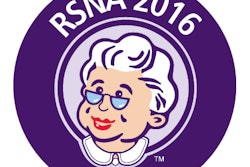
Radiology has long been an attractive field for physicians-in-training, with its generous salaries, (relatively) low rates of malpractice claims, and the consistent challenge of technological advances. But the field faces at least three threats going forward, according to an article published online in the Journal of the American College of Radiology.
"For many years, radiology has been a very appealing specialty for aspiring physicians," wrote lead author Katie Chockley and Dr. Ezekiel Emanuel, PhD, both of the University of Pennsylvania. But "although many medical students continue to seek out this specialty, and some trends do point to an increase in imaging, radiology faces ... major, potentially fatal, threats."
These threats have to do with how the practice of imaging is conducted and paid, according to Chockley and Emanuel, who list the following trends:
- A decrease in demand for imaging as care moves out of hospitals
- Payment reforms such as bundled payments and capitation that turn imaging into a cost rather than a profit center
- The rise of machine learning, which will become a powerful force in radiology over the next five to 10 years and could endanger the specialty
This last trend is cause for the most concern, according to the authors.
"Machine learning is already being used to aid interpretation of images and will only become more skilled as the algorithms gain access to additional data, potentially replacing radiologists altogether," they wrote.
Location, location, location
More patient care is taking place at home, or at nonhospital facilities such as urgent care clinics and ambulatory care centers, in part due to incentives in the Affordable Care Act, according to Chockley and Emanuel. And as care moves out of the hospital setting, more hospitals are operating at a loss or even closing -- at least eight have shut their doors in 2016 so far, according to the researchers (JACR, September 18, 2016).
This deinstitutionalization of care may translate into less need for imaging.
"A decrease in demand for imaging at hospitals, a decrease in the number of hospital visits, and a decrease in office visits all point toward lower demand for imaging and, therefore, lower demand for radiologic services," Chockley and Emanuel wrote.
Payment reform
Physician payments will become leaner as systems shift from fee-for-service to value-based models. In a fee-for-service structure, each imaging test produces revenue whether or not it is necessary; in a bundled payment framework, each imaging test is a cost, and unnecessary tests add unnecessary costs -- and reduce profits, according to the authors.
Cutting healthcare waste is important. However, it has consequences, especially when combined with the shift away from care in the hospital setting, Chockley and Emanuel wrote.
"Finding ways to reduce costs in our expensive healthcare system is critical, and reducing tests and treatments that are unnecessary and do not add value constitutes low-hanging fruit," they wrote. "As bundled payments and other payment reforms remove incentives to order costly and unnecessary tests and treatments, the number of images ordered will decrease."
Worried about Watson?
The shift in location of patient care and in how imaging is reimbursed are real challenges for radiology, but not in the comprehensive way that machine learning could be, according to the authors.
"The most potent threat to radiology as a specialty is machine learning," they wrote.
Machine learning consists of algorithms that allow a computer to learn from data and make predictions based on that data. It does offer advantages to radiology: These algorithms could make connections a clinician might miss, and they can also handle more complex datasets than people can.
"Whereas a human may become overwhelmed trying to read a particularly complicated scan ... a computer does not have those cognitive limitations," Chockley and Emanuel wrote. "Machine learning is not affected by fatigue, distractions, or emotions, as humans are."
Machine learning for radiology is already in use in computer-aided detection or diagnosis algorithms. IBM's Watson has found clots in the pulmonary arteries; another company, Enlitic, has technology that can flag radiographs with fractures and mark the fractures' location, according to the authors. And even if patients may not yet be willing to accept diagnoses made by a computer rather than a doctor, time will probably change that, they wrote.
"Ten years ago, even technological optimists scoffed at the possibility of driverless cars," they wrote. "Today, Google's self-driving cars have driven almost 1.5 million miles. ... It took 10 years for driverless cars to go from skepticism to reality. How long will it take for machines reading CT scans? Reading a CT or an MRI scan is much easier than driving."
Established radiologists may not think they need to change careers or adjust how they practice. But medical students contemplating radiology need to take these threats into account, the authors concluded.
"New residents must consider this changing landscape as they look ahead to a 40-year career in radiology," they wrote. "Decreased demand for reading imaging will lead to a decrease in income, and radiology might not be the profitable field it once was."



















